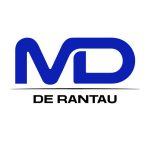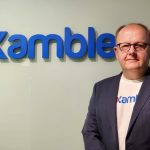European explorers once called Malay the ‘lingua franca’ of South-East Asia, rivaling Latin in Europe or Arabic in the Middle East. From Madagascar to the southern Philippines, Malay became and remains a crucial expression for millions of people, from the highest of royals to the hardest of workers.
Malay was the language of Southeast Asian civilisation. It was the language of record for the epic achievements of Sang Nila Utama, Hang Tuah and Tun Perak. These heroes of Melaka, Temasek and Nusantara as a whole remain compelling symbols of culture in the region, with comparisons between modern day candidates and historical figures exists even today in Malaysia’s general elections.
Fortunately for lovers of the language, Malay remains the language of tens of millions, a versatile language that enables everyone from skilled poets of the past, like Usman Awang, to eloquent hip-hop artists of the present, such as Altimet, Joe Flizzow & Aman RA, to express themselves.
However, in the process of Malaysia’s rapid urbanisation, touted as the fasted in the region between 2000 – 2010, the visibility of Malay’s incredible diversity has been somewhat forgotten to policy makers, businesses and marketers.
Peninsular Malaysian state has its own rich tapestry of unique local words and pronunciations: from the influence of Minangkabau culture in Negeri Sembilan to the Thai influence on Baso Kelate, Kelantan’s language. Even polyglot Google confuses Kelantanese with other languages, like Italian and Javanese.
Common wisdom and experience teaches that speaking like a local can connect you to the heart of a community. Which is why brands who speak in these unique dialects can communicate with their Malaysian audiences in a compelling way, differentiating themselves from homogenised competitors.
Nando’s is a restaurant chain that has built much its reputation on using slang and local language to better connect with Malaysians. To launch a new store in Kerteh, Terengganu they created a billboard with a local twist to lure ayam-loving Terengganunians into the store.

Shortly after, McDonald’s fired back with their own billboard in Kemaman district – shots fired in what is hopefully an escalating ‘war’ of dialect. To promote tourism in Terengganu, AirAsia used ‘TerrenganuMolekDoh’, while Samsung celebrated Malaysia’s dialects through a Malaysian flag designed out of state football chants. Even Malaysia’s Anti-Drug Agency has created posters in state dialects.

- AirAsia used ‘TerrenganuMolekDoh’
While it’s great to see these examples, one thing that’s quite apparent is that they are all “above-the-line” advertising.
Why in a time of hyper-personalisation marketing and real-time messaging aren’t these dialects more prominent on digital media? Are digital marketers missing a big opportunity?
“There are a few challenges brands face when it comes to understanding and responding to local dialects in Malaysia. The first is for their agents or agencies to understand the dialect, and the second is that they are able to respond quickly at scale.
Hyperlab is a Conversational Artificial Intelligence company in Malaysia helping visionary enterprises like Maxis and Hong Leong Bank, automate sales and support in many of Southeast Asia’s local dialects, including the rarer known online dialect of “Social Malay”.
According to Hyperlab, Social Bahasa Malaysia is a unique online dialect formed from socially accepted colloquialisms originating from the SMS era. That’s where we get common short forms like ‘xde’ for ‘tak ada’; ‘mcm’ for ‘macam mana’; and ‘sy’ for ‘saya’.
Dialex is a language cleansing tool by Hyperlab for English and Social Bahasa Malaysia. Customer experience (CX) has also become a primary focus for brands, as companies like Amazon have proven that a focus on providing great CX can show great returns. However, there are is still a lot of opportunity for businesses to improve. Gartner reports that 86% of customers would pay for a better experience, while Accenture reports that poor customer service costs businesses more than $1.6 trillion per year.
The core challenge for companies looking to optimise and scale their customer experience is doing so without increasing costs. That’s where the potential of artificial intelligence enabling businesses to scale CX comes in.
On top of understanding “Social BM”, Hyperlab is also tackling the local dialect challenge using neural networks, which can distinguish and understand unique regional dialects, like Kelantanese, better than Google.
Their goal is to enable brands to easily scale highly personalised conversations with their customers around the region. Not only relegated to marketers, this is an essential strategy for journalists as well, who use it to convey their genuine interest in their subject’s story. Malaysia’s own award winning journalists from R.AGE, comment on their experience investigating stories around the region…
“When we go out into the field and need a translator, there’s a barrier there, where nuances can get lost,” says Samantha Chow, journalist at The Star’s R.AGE.
She adds that brushing up on regional small talk before an interview can really help gain trust and better connect with those they Interview.
R.AGE has also partnered with Hyperlab to build Ana, Asia’s first Sex-Education chatbot. Ana is designed to answer questions from teens and parents about reproductive health, and avoiding sexual predators online ,in English, Bahasa Malaysia, Manglish and Social BM. You can chat with Ana on www.predator.my

- Ana, Asia’s first Sex-Education chatbot
When asked whether she worries about job security in the face of growing technologies like Ana, Samantha replied “job disruption is unavoidable, the trick is to try and work with technology, rather than for it”.
Gartner predicts that AI for Customer Experience will “disrupt the the jobs of 1 million phone-based customer support agents (Gartner: Future of Experience).
Meanwhile, the IDC calculates that AI associated with Customer Experience “will boost global business revenue from the beginning of 2017 to the end of 2021 by $1.1 trillion.” This boost will result in more than 2 million new jobs by 2021, a net-positive gain in job creation as a result of automating customer support (IDC, A Trillion-dollar Boost: The Economic Impact of AI on Customer Relationship Management).
It’s no secret that dialect marketing has been sorely underutilised in Malaysia throughout the years.
And now, more than ever, consumers are choosing where to spend their hard earned money with companies who can deliver great experiences.
Dialect marketing has been a proven strategy in the past, but one that has not been easy to scale. However, pairing this strategy with innovative Natural Language Understanding technologies enables companies to truly unlock the value of dialect marketing.
Written by Chris Greenough, CMO and Co-founder of Hyperlab (picture), and Oliver Woods, Digital Director and Co-founder of RED2 Digital.

Read MARKETING Magazine’s full issue 224 HERE!

BEST OF GLOBAL DIGITAL MARKETING Conference 2018
The Best of Global Digital Marketing returns to Malaysia – showcasing best practices from all over the world!
Feeling a bit puzzled regarding what actually makes your content shine in the digital space?
Having investigated hundreds of case studies from all over the world – we now have the answers for you.
Hando and his team have monitored over 200 digital marketing award show across the globe. Based on this extensive work, they produce in-depth case studies which go into the making of the Best of Global Digital Marketing conference. Meet them in person:
Speakers with digital domain expertise:
# Hando Sinisalu – CEO and Speaker, case.digital (previously known as Best Marketing International)
# Joakim Borgstrom – Executive Creative Director, BBH Singapore
# Nikhil Panjwani – Creative Director, BBH Singapore
# Roman Olivarez – Creative Director, Lowe Makati City
# Amit Sutha – Managing Director of Universal McCann and Ensemble Worldwide
Global Case Studies include:
- Wendy’s ‘’Find the Burger’’
- Rexona ‘’Mobile Voice Pack’’
- KFC ‘’Rain or Shine – KFC Sells’’
- IKEA ‘’Human Catalog’’
- NIKE ‘’Hyper Court’’
- Dove “Image_Hack”
- Ontario Tourism ‘’Where Am I?’’
- Santander Bank “Beyond Money”
- McDonald’s “Promoticon”
- Nissan ‘’KEFA – Fake Spare Parts’’ and many more!
Date: 4 September 2018 (Tuesday)
Venue: Sime Darby Convention Centre, Kuala Lumpur.
Time: 9.00am – 5.00pm
Book your seats early, HRDF-Claimable!
Call Ruby/Amira 03-77262588 or email ruby@adoimagazine.com | amira@adoimagazine.com
Register and Download event PDF here
Full details: http://best-marketing.eu/events/kl-2018/
MARKETING Magazine is not responsible for the content of external sites.











